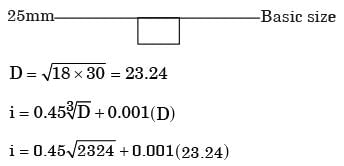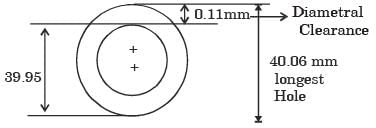GATE Past Year Questions: Limits, Fits & Tolerances | Manufacturing Engineering - Mechanical Engineering PDF Download
[ME 2004] mm mate with holes of size
mm mate with holes of size  mm. The maximum possible clearance in the assembly will be
mm. The maximum possible clearance in the assembly will be
[ME 2003]
[ME 2001]
[ME 1996]
[ME 1993] mm and a hole of diameter
mm and a hole of diameter  mm when assembled would yield
mm when assembled would yield
[ME 1992]
[ME 1991] and bore diameter of bush is
and bore diameter of bush is  The maximum eccentricity of the bush in mm will be
The maximum eccentricity of the bush in mm will be
[ME 1988]
[ME 1987] and shaft,
and shaft,  when assembled will result in
when assembled will result in
|
56 videos|80 docs|29 tests
|
FAQs on GATE Past Year Questions: Limits, Fits & Tolerances - Manufacturing Engineering - Mechanical Engineering
| 1. What are limits, fits, and tolerances in mechanical engineering? |  |
| 2. How are limits and fits classified in mechanical engineering? |  |
| 3. What is the significance of tolerances in mechanical engineering? |  |
| 4. How are limits and fits determined in mechanical engineering? |  |
| 5. What are some common types of fits used in mechanical engineering? |  |






















